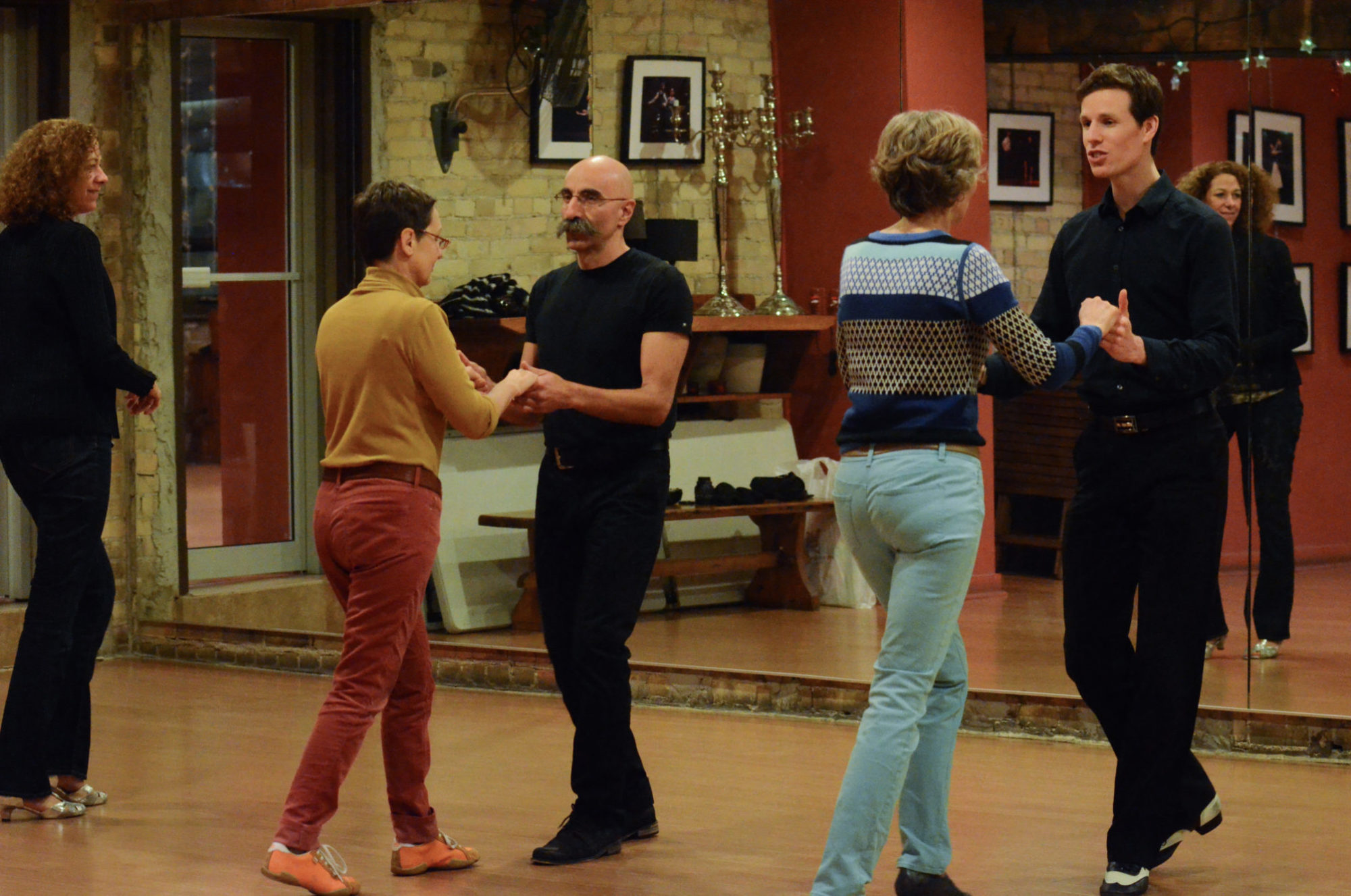Learning dance, especially ballroom dancing, can feel like drinking from the firehose at first. Every new skill you master, just seems to reveal three more dance techniques that take twice as long to develop. How do you know what to focus on first?
Fortunately, there IS a fairly specific order to building your expertise. When learned in the correct order, each of the dance techniques you learn preps you for the next one.
In reality, you’ll sometimes find you still need to work on several techniques at once. And really, that’s a good thing: who wants to spend hours perfecting their footwork before they even touch a partner’s hand?
The thing to remember is that until you can do it without thought, focus on the simplest techniques first. This gives your dancing reliability and consistency, and that’s what will keep your partners coming back for more.
This article is great if you are making a practice plan for your dancing, want to make the most of your time (and money) spent on lessons, or even are thinking about teaching yourself. Sound like you? Then let’s get started!
A VERY General Summary of Ballroom Dance Techniques
Before we get properly ‘stuck in’, it helps to know that you can group everything you learn in ballroom dancing under these very general headers:
- Footwork
- Timing
- Leading/Following
- Musical Expression
It’s easier to see here, how each group of dance techniques makes future groups easier to learn. You obviously can't develop your musicality if you haven't learned to step on time, or lead your partner without knowing your footwork.
Now that you’ve a general understanding of how all ballroom dancers progress, it’s time to get specific! What are the common dance techniques we learn, and why should we learn them in this order?
1. Foot positions
Why it’s first: Like the bottom layer of a wedding cake, we need to build our technique from the ground up. That means learning the basic patterns of where you place your feet, so you can eventually create cool combinations with your partner.
2. Moving to the beat
Why it’s next: Once you know where to place our feet, it’s time to think about when you place them. This is when dancers first learn about quicks and slows, and stepping on the beat (more on that here).
3. Partner connection
Why it’s next: At this point, you’re starting to develop more confidence in your own ability to travel through some patterns to music. Like the old saying about loving yourself first, only now are you ready to connect with your partner.
This is means delving into the concepts of frame and pressure, which is how your arms are positioned in relation to your partner, as well as where and how much you ‘push’ against your partner’s frame.
 In everyday terms, frame and pressure create ‘room’ for you to dance without stepping on each other.
In everyday terms, frame and pressure create ‘room’ for you to dance without stepping on each other.
4. Floorcraft
Why it’s next: You could actually go out dancing at this point, but without floorcraft, you might find it frustrating, and you wouldn’t be the only one! Floorcraft, simply put, is the ability to progress safely around the floor while avoiding other dancers.
For instance, you might practice avoiding chairs placed in your way while practicing, or increasing pressure on your partner’s back to prevent a collision. Leaders learn to plan ahead, so they can dance for longer periods without getting confused.
5. Posture
Why it’s next: You may be functional on the dance floor, but it’s hardly a compliment to be called ‘functional’, is it? Correct posture means your body is well balanced, which allows you to handle more challenging patterns. And you’ll look better too!
At this stage, you also learn how to tighten up your body, so it moves like a single unit. Imagine trying to lift a wooden board vs a bag of sand of equal weight. Which is easier? The board, because it doesn’t change shape when it’s moved. Be like a board.
6. Moving from the centre
Why it’s next: As your posture improves, you become more able to connect your centre of gravity, located around the solar plexus, to your partner. Most dancers initially connect through their arms and chest, causing them to lean forward and sometimes lose balance.
Putting emphasis on leading and following through the centre will do wonders for your balance, because it will make your body move like a wall, upright and balanced with every step.
7. Turning
Why it’s next: Sure, you’ve probably done a few turns by now, but if you want to get into more advanced and multi-turns, you’ll need that core connection you just learned! That ‘upright and balanced’ movement is your ticket to spinning without falling over.
8. Smoother movement
Why it’s next: This is interchangeable with turning, but smoother footwork marks the point where you finally start to advance into more musical dancing. Smoother movement can mean footwork, like heel or ball leads, or body movement, like Latin hip action, or rise and fall.
At this point, you can drill further into any of the dance techniques we’ve talked about, so prioritizing becomes less important. Knowing these building blocks of ballroom dance technique will help you accelerate your learning, with any ballroom dance you choose.
About the Author
Ian Crewe has been dancing ballroom for over 18 years, and has a Licentiate in American smooth and rhythm. His passion for dance eventually led him to blogging and the World Wide Web. Ian currently teaches at the Joy of Dance Centre, Toronto, ON, Canada. Click here to see when Ian is available for lessons.
